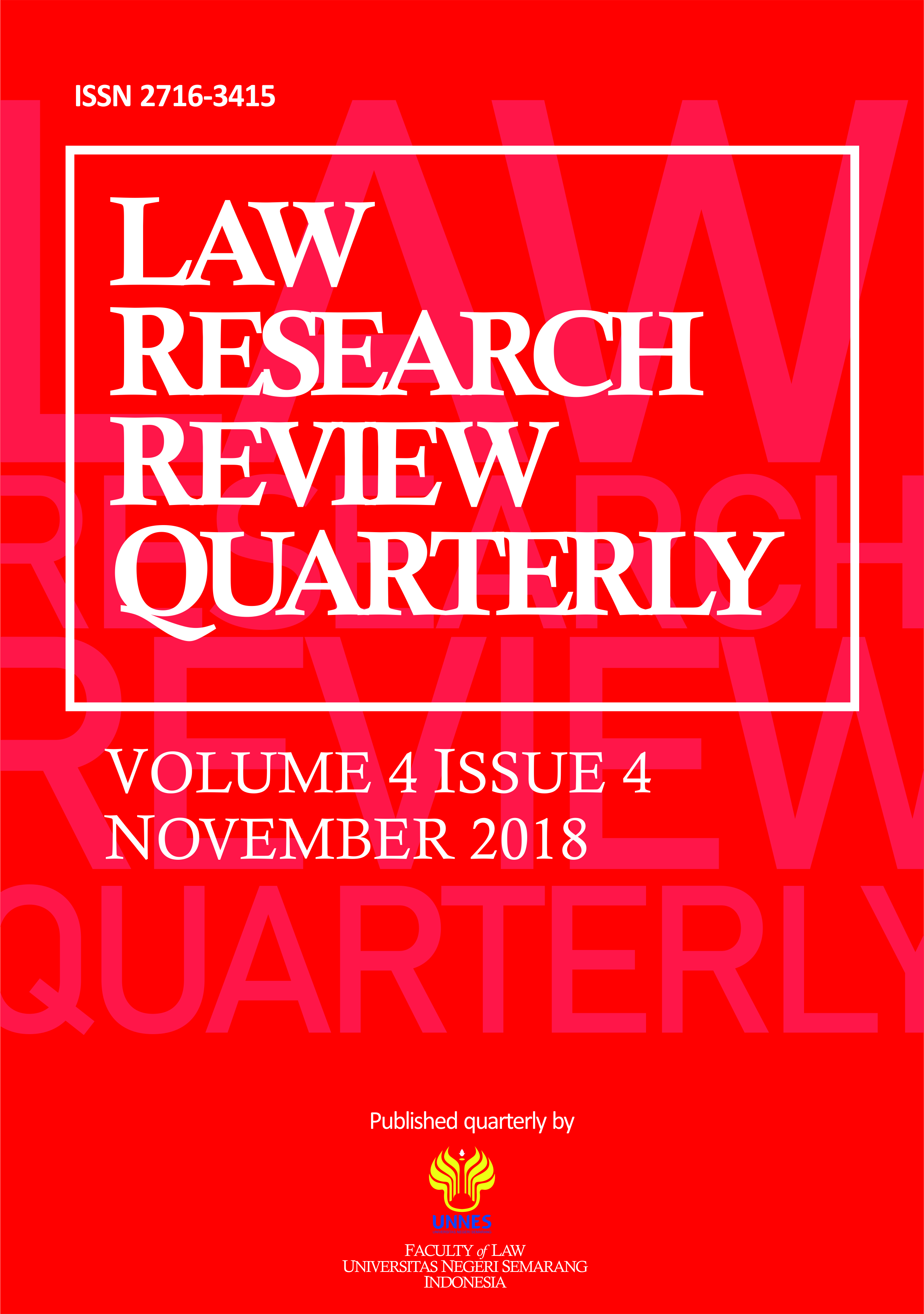The Impact of Media in the Disruption Era as a Realization of 2019 Presidential Election Integration
Main Article Content
Abstract
As time goes by the needs of life in the community also increase driven by the demands of the times that are increasingly modern. This makes the community to keep abreast of the development of the era in order to fulfill their needs. Fulfillment of needs that are felt to be increasingly complex which ultimately leads to a time when technology or digital media get a major place in the life of society, especially the Indonesian people. This is not new anymore because the number of Indonesian internet users is around 143.26 million based on a survey by the Indonesian Internet Service Users Association (APJII) in 2017. Emerging technologies and media can help in people's lives in various fields. But with the evolution of this technology it should be interpreted as a matter of uniting the needs of the community even though there are many threats that can occur. The role of the media is very quickly entered into the scope of society. Like in the economic, political and socio-cultural spheres. The negative impact itself from this technology is the difficulty of integration in society because the information that comes in is very diverse so this can affect the mindset of the community. Reflected at this time the 2019 presidential election will be held. This media function is also expected to be a positive bridge for the community.
Article Details
All writings published in this journal are personal views of the authors and do not represent the views of this journal and the author's affiliated institutions. Author(s) are retain the copyrights of the Article. However, before publishing, it is required to obtain written confirmation from Author(s) in order to ensure the originality (Author Statement of Originality). The statement is to be signed by at least one of the authors who have obtained the assent of the co-author(s) where applicable.This work licensed under a Creative Commons Attribution-ShareAlike 4.0 International (CC BY-SA 4.0)
References
Adib, Mohammad. 2011. Filsafat ilmu: onto-logi, epistemologi, aksiologi, dan logika ilmu pengetahuan. Pustaka Pelajar: Yogyakarta.
Arikunto, 2006. Prosedur Penelitian Suatu Pendekatan Praktek. PT. Rineka Cipta: Jakarta. hlm 118
Dominick, J. R. 2009. The Dynamic of Mass Communication, Media in the Digital Age. New York: McGraw-Hill.
Flew, T. 2008. New Media: an Introduction. 3rd Ed. Victoria: Oxford,
Littlejohn. Stephen W. 2005. Theories of Human Communication, eighth edition. Belmont: Thomson Learning Inc.
Mulyana, Deddy. 2008. Komunikasi Massa: Kontroversi, Teori, dan Aplikasi. Widya Padjadjaran :Bandung.
Martono, Nanang, (2012). Sosiologi perubahan sosial: perspektif klasik, modern, postmodern, dan postkolonial. PT. Raja Grafindo Persada: Jakarta.
Sendjaja, Sasa Djuarsa, dan Ilya Sumawinardi, 1994. Teori Komunikasi: Materi Pokok Modul Universitas Terbuka, UT: Jakarta.
Huntington, P.Samuel dan Nelson Joan, 1990. Partisipasi Politik di Negara Berkembang, (Rineka Cipta: Jakarta) h. 9-10.
Widodo, 1997. Teknik Wartawan Menulis Berita di Surat Kabar dan Majalah Indah. Surabaya. Cet. I. hal. 7-8
Dari Web
Jimly, Asshidiqie, Ideologi, Pancasila dan Konstitusi, diakses dari http://www.jimly.com, diakses pada tanggal 29 Januari 2014.
Dari Jurnal
Ngafifi, Muhamad, 2014. KEMAJUAN TEKNOLOGI DAN POLA HIDUP MANUSIA DALAM PERSPEKTIF SOSIAL BUDAYA. Jurnal Pembangunan Pendidikan: Fondasi dan Aplikasi. Volume 2. Nomor 1.
Soemardjo, Sumarsono, 2015. THE ROLE OF TELEVISION TO INCREASE THE POLITICAL PARTICIPATION OF THE SOCIETY IN THE PRESIDENT’S ELECTION OF 2014 (Case in Desa Landungsari Malang). Jurnal Penelitian dan Pengembangan Komunikasi dan Informatika Volume 5 No. 3.
